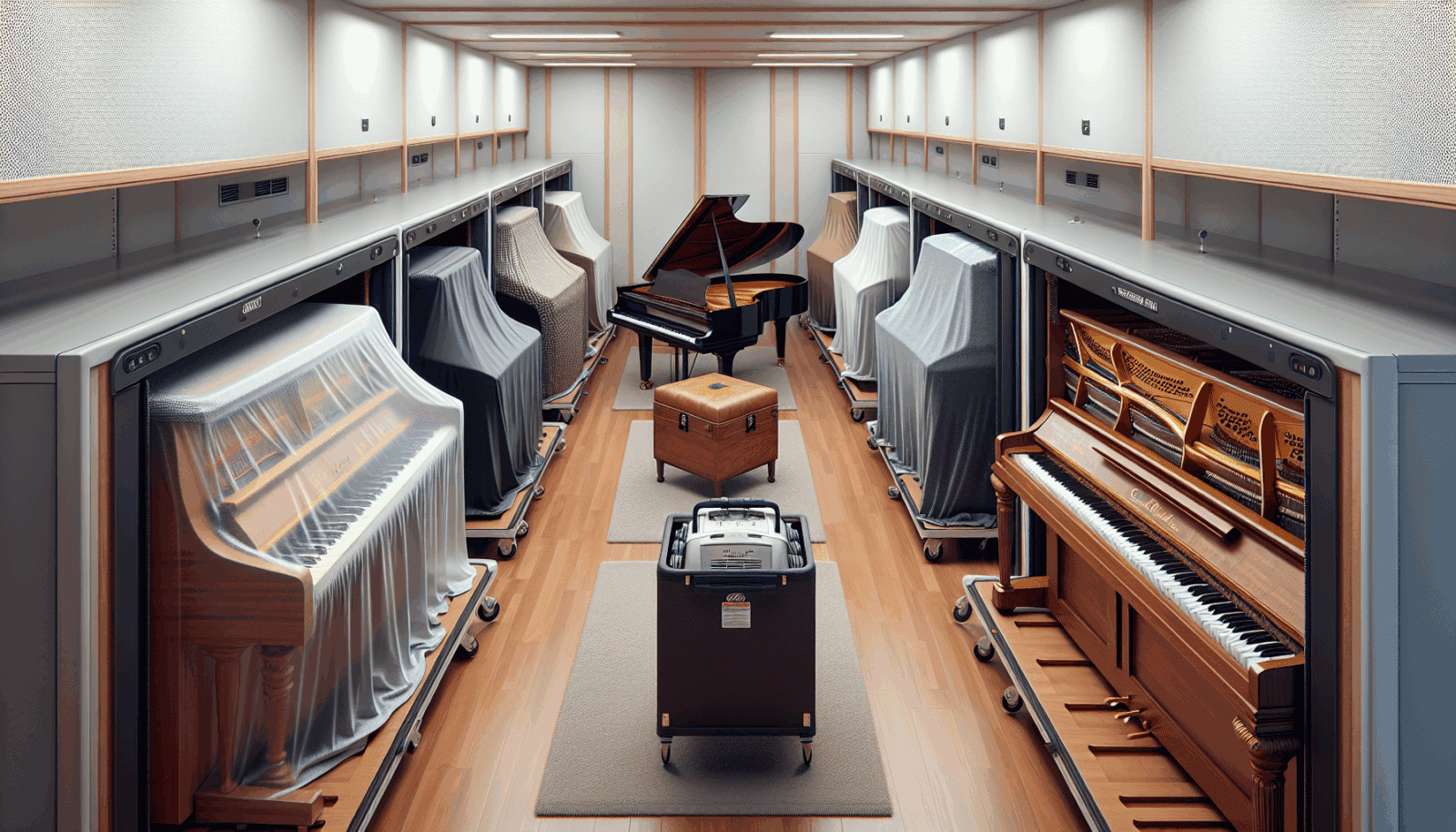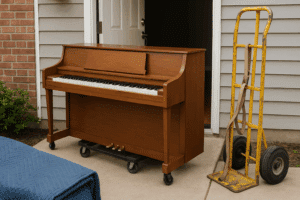In the harmonious world of music, your piano plays a pivotal role. But when it comes to storing this majestic instrument, many homeowners find themselves in a quandary. Here at Utah Piano Movers, we understand the intricacies involved in keeping a piano in pristine condition, especially when it needs to be stored. This article will walk you through the best piano storage solutions to help you safeguard your instrument, ensuring it remains in perfect harmony with your musical dreams.
Contents
- 1 Understanding the Needs of Your Piano
- 2 Optimal Locations for Piano Storage
- 3 Significance of Climate Control
- 4 Preventing Physical Damage
- 5 Preparation Steps Before Storage
- 6 Choosing Professional Movers
- 7 Long-term Versus Short-term Storage
- 8 Insurance: A Layer of Security
- 9 Regular Check-ups
- 10 Final Thoughts and Moving Forward
Understanding the Needs of Your Piano
Every piano, whether it’s an upright or a grand, has unique requirements. Climate control ranks at the top, with humidity changes capable of affecting wood, strings, and tuning. Your piano isn’t just another piece of furniture; it’s a finely crafted musical masterpiece that demands respect and care. Consider what specifics your type of piano might need and explore how different storage solutions can cater to these needs.
Being mindful of these factors will steer your decision-making process, leading to options that best suit your piano’s needs. We’ll cover different choices, including finding the perfect location, controlling environmental factors, and more, in the sections to come.
Optimal Locations for Piano Storage
Where you place your piano during storage is of paramount importance. Avoid leaving your piano in a garage or basement, as fluctuating temperatures and moisture can wreak havoc on its structure. An ideal spot would be a room within a conditioned environment where temperature and humidity are reasonably controlled year-round.
Storage facilities specifically designed for delicate items offer another excellent option. Such places maintain optimum conditions to prevent any environmental damage over time.
Significance of Climate Control
Temperature and humidity levels are critical considerations in piano storage. Excess moisture can cause wood to swell, while dry air might lead to cracking. Therefore, consistently maintaining temperatures between 68°F and 72°F and a humidity level of around 42% ensures that the wood and internal components remain stable.
Fortunately, technologies today allow for easy control and monitoring of climate conditions, providing peace of mind that your piano is safe and sound.
Preventing Physical Damage
Protection from physical damage is just as important as environmental factors. Using padded covers and leg wraps can prevent scratches and dings. It’s equally important to make sure the cover protects the keys and other sensitive parts.
Consider investing in sturdy casters or dollies to ease movement without risking structural damage. Remember, even slight mishandling can alter the intricate mechanics inside your piano.
Preparation Steps Before Storage
Preparation is key to effective piano storage. Begin by cleaning your instrument of dust and oil, focusing on keys and surfaces. While cleaning, inspect your piano for any repair needs—it’s best to fix these before storage.
Tuning your piano prior to storing might sound counter-intuitive, but it’s essential. This ensures all elements are correctly positioned and will need fewer adjustments when it’s time to play again.
Choosing Professional Movers
Moving a piano requires expertise and muscle power. Engage professionals who specialize in piano moving, as they understand the delicate nature and nuances involved. We at Utah Piano Movers pride ourselves on offering expert piano moving Services with precision and care.
Our team ensures your piano is moved and stored with the utmost professionalism. Through expert handling, proper equipment, and knowledge, your piano remains safe with us.
Long-term Versus Short-term Storage
The duration of storage plays a significant role in your preparation and needs. For short-term storage—up to three months—a temporary solution in a suitable room may suffice. However, if you’re planning to store it longer, investing in a climate-controlled facility becomes crucial.
A thorough understanding of whether short-term or long-term solutions are needed will help tailor your protection efforts effectively, preserving the piano’s integrity.
Insurance: A Layer of Security
You can never be too cautious when it comes to protecting a valuable asset like your piano. Insurance offers a financial safety net against unforeseen damages during storage. Reach out to your homeowner’s insurance to explore coverage options, or look into specialized insurance for musical instruments.
This step provides you with peace of mind, reassuring you that your investment is truly protected even in unpredictable circumstances.
Regular Check-ups
Checking on your stored piano periodically is essential, especially for long-term storage. Look for signs of changing humidity, distortion, or infestation. Such check-ups ensure any arising issues are addressed promptly, preventing small problems from escalating.
Use these opportunities to air out your piano if possible, helping maintain a fresh-smelling instrument.
Final Thoughts and Moving Forward
Best piano storage practices help preserve your instrument’s sound and beauty for years to come. If you’re seeking expert guidance, remember that we are just a call away. Contact Us by phone at 801-396-7323 or Request a Free Quote today.




